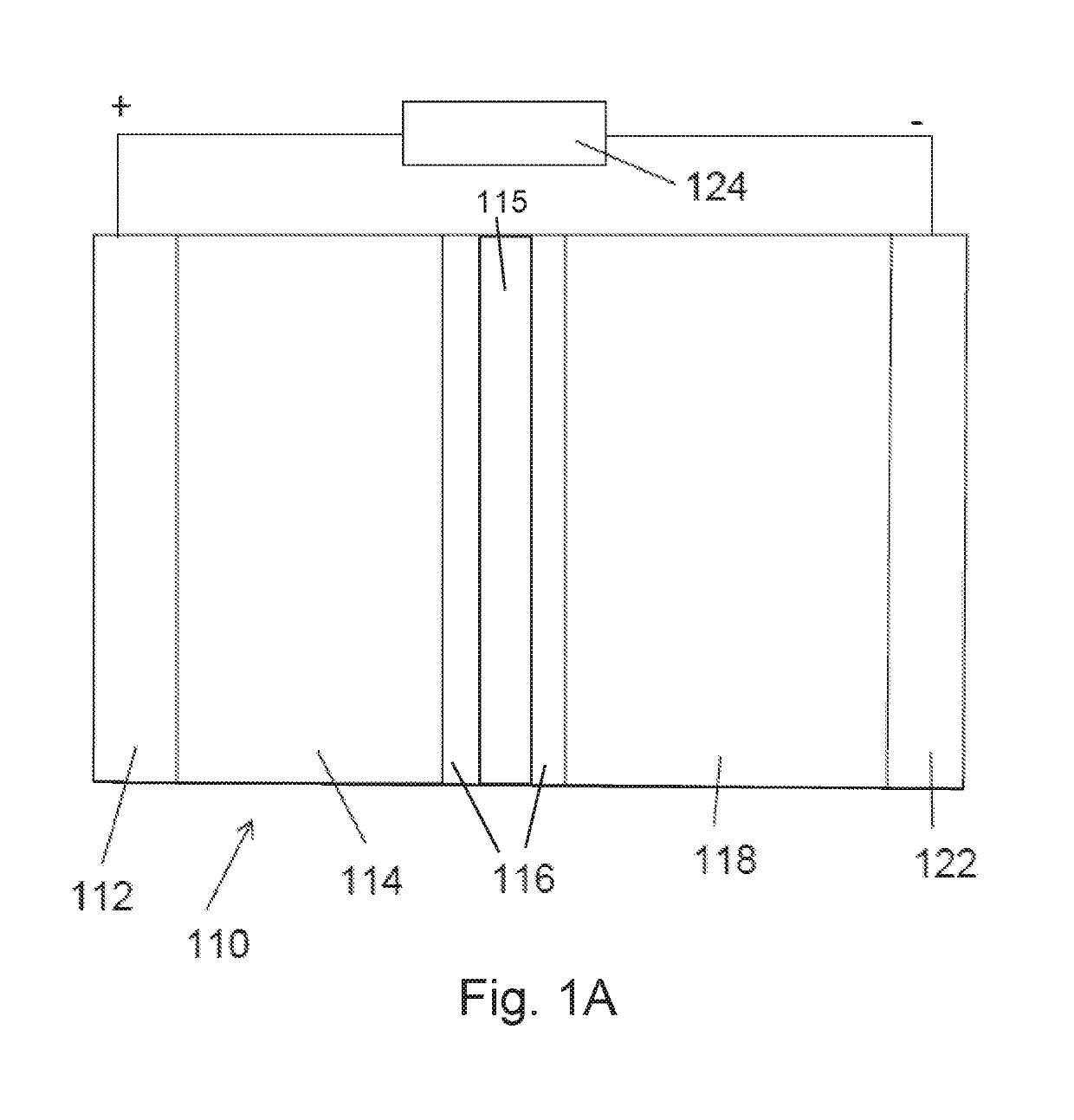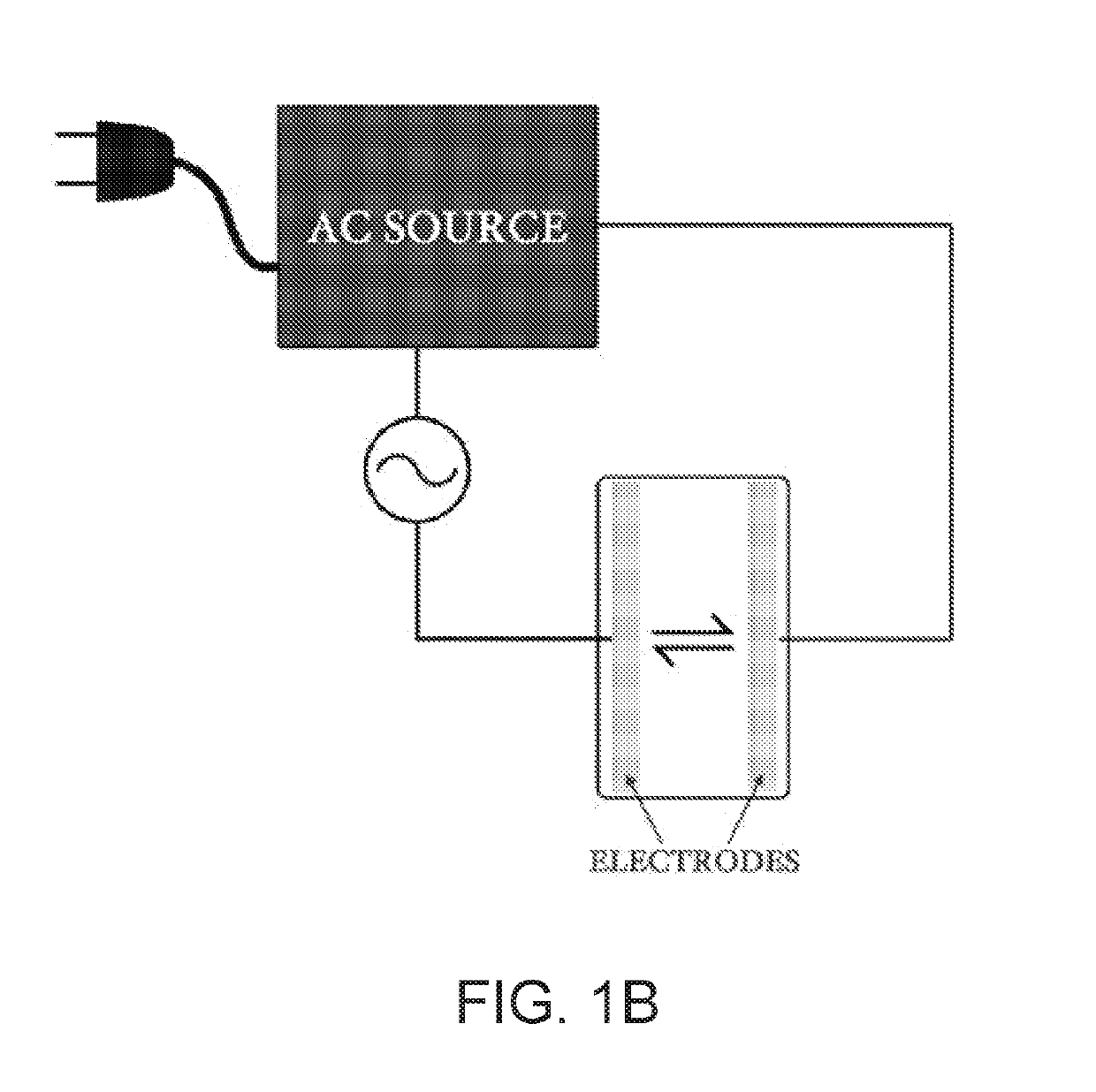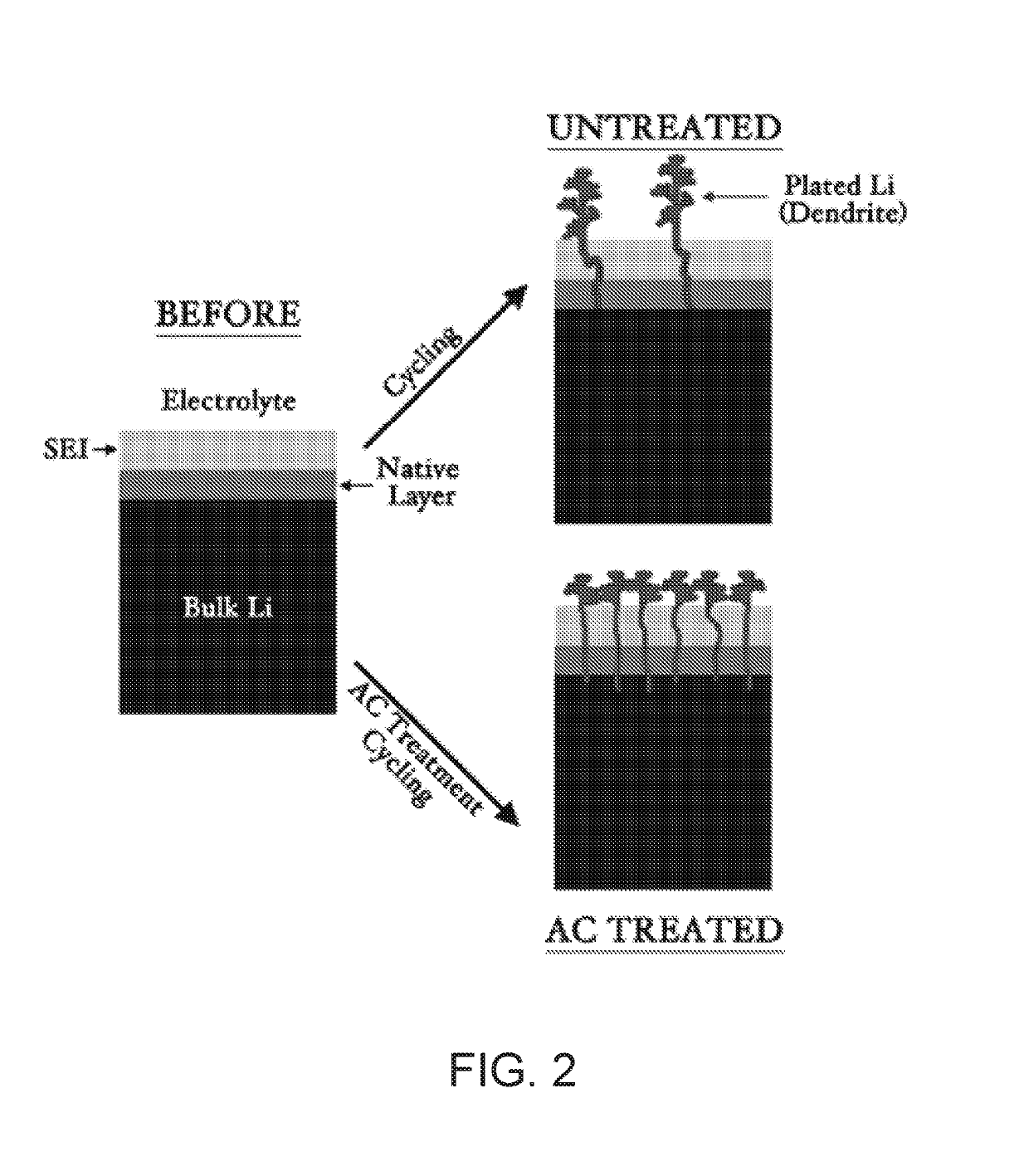Method of Improved Performance in Metal Electrodes For Batteries
- Summary
- Abstract
- Description
- Claims
- Application Information
AI Technical Summary
Benefits of technology
Problems solved by technology
Method used
Image
Examples
example 1
[0050]A model battery system including a lithium anode and lithium cathode using LiPF6 as an electrolyte and a Celgard 2320 polypropylene / polyethylene / polypropylene trilayer separator (0.028 μm average pore diameter) was subjected to an AC voltage perturbation of 0.5 V in amplitude at a frequency range from 700 Hz-200 Hz for 2 minutes. FIG. 4 shows the effects of AC treatment example on the lifetime of a lithium anode. The AC treated anodes exhibited far more stability as compared to the untreated anodes. Specifically, the AC treated electrodes exhibited markedly lower overpotentials and dramatically improved stability. This indicates that less degrading side reactions occurred with the surface of the AC treated lithium metal electrode and the electrolyte, as well as a more efficient transfer of charge species between the electrode and electrolyte.
[0051]To help confirm this result, lithium / copper cells were fabricated such that the AC treated lithium metal electrode acted as the ano...
example 2
[0052]This Example describes a purely electrochemical method for improved coulombic efficiency and lifetime of lithium metal electrode batteries.
[0053]Lithium metal anodes are key to enable high energy density secondary battery systems however, at the present, these electrodes are plagued by uncontrolled side-reaction and unstable interfaces. Physical and chemical modifications of the solid electrolyte interphase (SEI) are well-documented methods for addressing these challenges. However, they are limited in performance and scalability, which has prevented widespread commercialization. In this Example, we demonstrate an in-situ electrochemical method for improving Li metal electrode performance without need for ex-situ protection strategies. By treating Li anodes with an alternating current (AC) perturbation, the performance of Li metal electrodes can be significantly improved. Cell lifetime at 1 mA / cm2 is tripled, a deep discharge of a 750 μm thick electrode demonstrated a capacity ...
PUM
 Login to View More
Login to View More Abstract
Description
Claims
Application Information
 Login to View More
Login to View More - R&D
- Intellectual Property
- Life Sciences
- Materials
- Tech Scout
- Unparalleled Data Quality
- Higher Quality Content
- 60% Fewer Hallucinations
Browse by: Latest US Patents, China's latest patents, Technical Efficacy Thesaurus, Application Domain, Technology Topic, Popular Technical Reports.
© 2025 PatSnap. All rights reserved.Legal|Privacy policy|Modern Slavery Act Transparency Statement|Sitemap|About US| Contact US: help@patsnap.com



